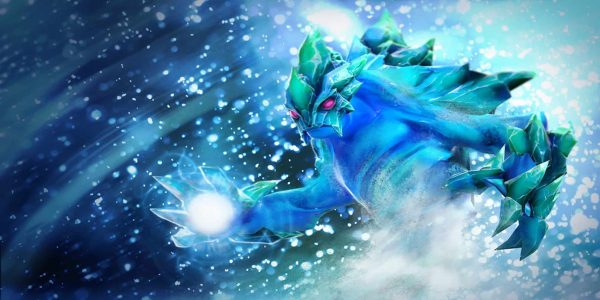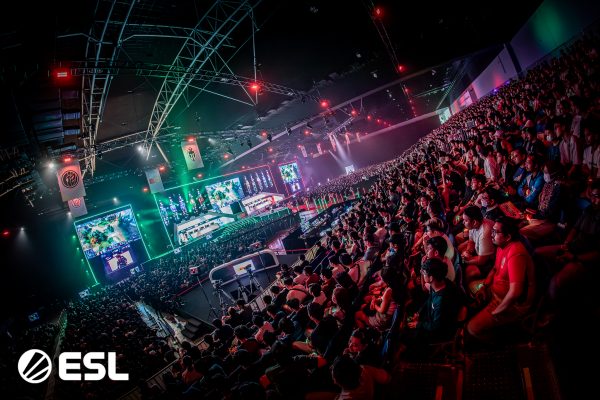With 2018 coming to a close soon, we wanted to look back at this past year in Dota 2 news. Though the Dota 2 Pro Circuit (DPC) dominated the tournament schedule, it wasn’t the only hot news of 2018. We’ve selected some of the highlights of the past year to revisit. Please note that many events, DPC and otherwise, are not included in our list; don’t consider this an exhaustive account of all Dota 2 tournaments through the year!
With 2018 coming to a close soon, we wanted to look back at this past year in Dota 2 news. Here are some of the highlights of the past year to revisit. (Photo by Jeff Vinnick
Without further ado, let’s discuss some of 2018’s most memorable Dota 2 moments.
January
Captain’s Draft 4.0
Washington, D.C. in the middle of the winter, in the unheated DC Armory. We’re sure that it made complete sense on paper. The tournament was a Minor in the first season of the Dota 2 Pro Circuit, with a $300,000 (USD) prize pool and 300 DPC points on the line. It was Moonduck Studio’s first LAN event, made all the more memorable for the shots of the crowd in full winter gear.
Okay, maybe it was memorable because the studio also really embraced the capital city theme. There was the rock-paper-scissors “duel” before each series to determine which team had first pick and which side. There were costumes and content pieces with that “founding fathers” aesthetic.
While it may not have been a success on all fronts, this was the only Captain’s Draft event on the DPC schedule. This game mode has teams drafting from a random pool of 27 heroes. That may have been a positive point if you’re a fan of the mode or of variety in tournaments, and it may have been a negative point, if you’re a purist and feel the DPC should stick to Captain’s Mode.
Regardless, congratulations to Team Secret for winning Captain’s Draft 4.0!
Bi-Weekly Patches
At the very end of January, IceFrog (the best-known Dota 2 developer) announced that Valve was going to experiment by releasing patches every two weeks. The community thought these would be smaller changes, but oh no, that was not the case. Over the next few months, everything from heroes to items to crucial game mechanics was tweaked or changed.
The most lamentable part was that the patches were, at least initially, relentlessly released every other Thursday. This often left teams scrambling to understand the changes hours before a tournament would begin.
The experiment began at the start of February with Patch 7.08 (the Spring Cleaning update) and ended with Patch 7.18 at the end of June. By this point, it seemed no one was disappointed to see the patch schedule slow down.
February
Virtus.pro Roster Change
Virtus.pro had a strong start to the DPC, but they placed 5-6th at ESL One Genting at the end of January, a disappointing result for them. At that point, they were tied for second place in the DPC rankings with Team Liquid. Apparently unsatisfied, the team announced on February 1 they were trading Ilya “Lil” Ilyuk to Natus Vincere in exchange for Vladimir “RodjER” Nikogosyan.
The Virtus.pro-Natus Vincere transfer resulted in Natus Vincere getting a bump in DPC points as Lil had earned over 1000 with Virtus.pro to that point. It seemed like a much-needed boost for Natus Vincere at the time, but they didn’t find the same synergy with Lil that Virtus.pro did with RodjER.
ESL One Katowice 2018
ESL One Katowice 2018, a Major on the DPC circuit worth 1,500 points and $1,000,000 (USD), featured the debut of the new Virtus.pro and Natus Vincere rosters. Sadly, the two teams did not meet each other at the tournament.
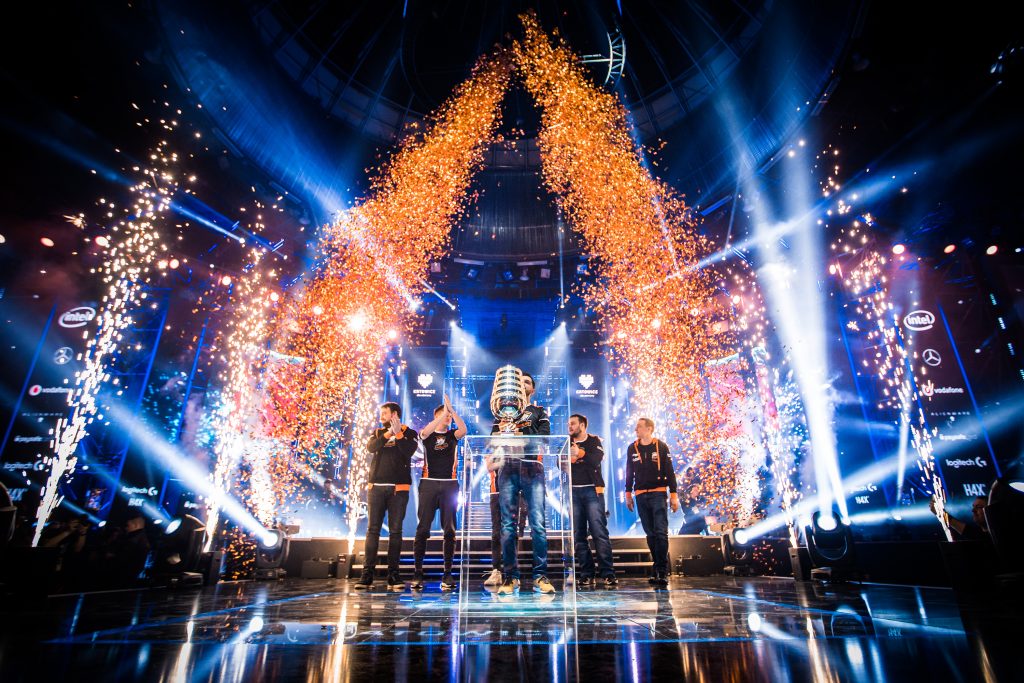
Photo courtesy of Helena Kristiansson | ESL
This was the first time ESL ventured to Poland for Dota 2. The tournament had a huge sixteen-team field, only the second time in the DPC to this point in the season that a tournament had so many teams. The first time was ESL One Genting 2018 in January.
Natus Vincere failed to make it out of their group, knocked out by Newbee. However, Virtus.pro finished second in their group, losing two long games to Vici Gaming. They met Vici Gaming in the Grand Finals of the event and won 3-1. RodjER took home the MVP award, a Mercedes Benz. It was a strong statement about the competitiveness of the new Virtus.pro line-up.
March
Dota Plus Release
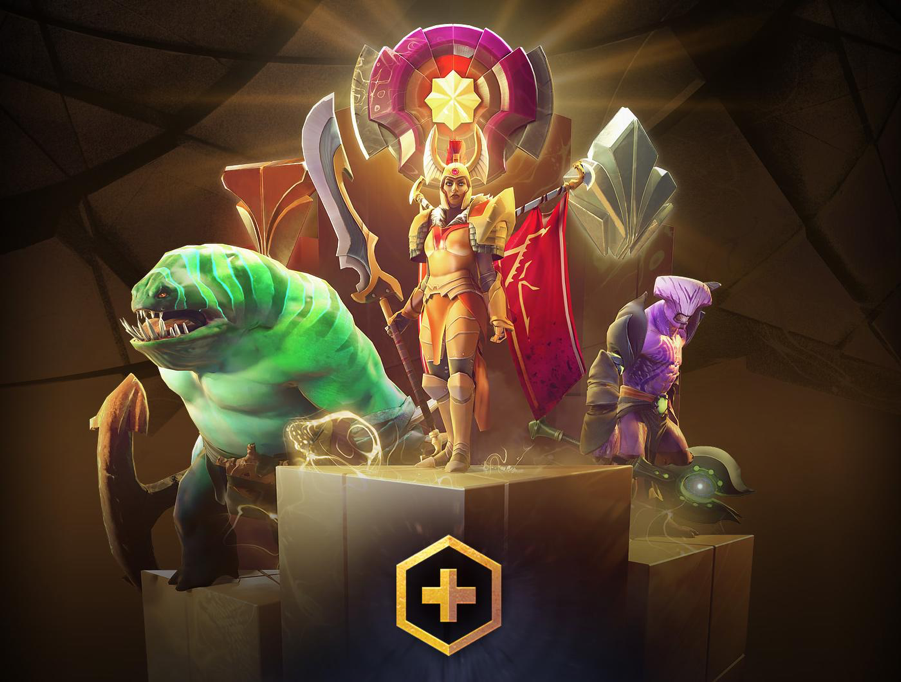
March 12 brought us Dota Plus: Valve’s subscription service for Dota 2 players who wanted a little bit more. More what? More achievements to hunt via Hero Progression, more skins to acquire via Dota Plus shards, more levels to acquire on a per-hero basis, more relics (now hero-specific)…
But wait, there’s more! Namely, the Plus Assistant. It provides both in-game assistance with hero suggestions during draft and item and skill build suggestions during the game as well as a load of analytics to wade through post-game.
Dota Plus also offers ranked role queue, a spectator’s win probability graph, real-time comparative analytics and so on.
All of this is available for the low, low fee of $3.99 (USD) per month, or slightly less if you signed up for a longer period of time. Valve framed it as an evolution of the Battle Passes that had been previously available for purchase.
The initial reception was mixed. There was a vocal outcry about Dota 2 becoming pay-to-win. Surely, the Dota Plus benefits gave players an unfair advantage! Mind, the in-game advice is drawn from data about what your MMR peers tend to do—this is not a tool for innovators. Other players saw Dota Plus as a useful onboarding tool for new players, providing them with guidance that could be invaluable for improving the game’s accessibility. The problem for some was the cost of it: why weren’t the features available to everyone? The Assistant doesn’t encourage learning though, it’s something for players to use when they don’t want to engage with the question “what’s the best choice I can make in this situation?”
Over time, frustration has focused on the pay-gating of ranked role queue and on how infrequent the Dota Plus updates have been.
April
Dota 2 Asia Championships 2018
April began with the Dota 2 Asia Championships 2018 (DAC 2018). DAC is a well-respected annual tournament. This year was no different, with an evocative set design focused around a massive Roshan statue that held the trophy: a larger-than-life model of Radiance.

Mineski won, beating LGD Gaming (soon to become PSG.LGD) 3-2 in the Grand Finals. Mineski became the first SEA team to win a Dota 2 Major. With the points from this event, the team secured their invitation to TI8. This squad reunited SEA legends, Chai “Mushi” Yee Fung and Daryl Koh “iceiceice” Pei Xiang. They had previously played together on the Team DK squad that placed fourth at TI4.
May
ESL One Birmingham 2018
ESL One Birmingham was the first Dota 2 Major—truly, the first significant Dota 2 LAN—to take place in England. ESL played that up with a British stage host, Alex “Machine” Richardson, and a British desk host, Paul “Redeye” Chaloner. The stage opening, in which Machine expressed what it meant to him to host the event, really underlined how important hosting LAN events all over the world is to the community; nothing can beat the in-person attendance experience.
The tournament culminated in a face-off between Virtus.pro and Optic Gaming. At the time, this was the last event of the season for Optic Gaming and they needed to win the tournament to secure their invitation to TI8. Virtus.pro really only needed to win to secure another MVP Mercedes-Benz. Virtus.pro took the series in a 3-0 stomp. The third game was barely longer than nineteen minutes.
Vladimir “No[o]ne” Minenko took home the car. Surprising, well, no one.
Evil Geniuses/OG
The most shocking roster change of the entire year came at the end of May when Tal “Fly” Aizik and Gustav “s4” Magnusson announced they were leaving OG and joining Evil Geniuses. OG had struggled all season with trying to integrate carry player Roman “Resolut1on” Fominok, and in March, Resolut1on had left the team. Coach Sébastien “7ckngMad” Debs stepped in to fill the gap while the team looked for a long-term replacement. It seemed, however, that by the end of May, Fly and s4 had enough.
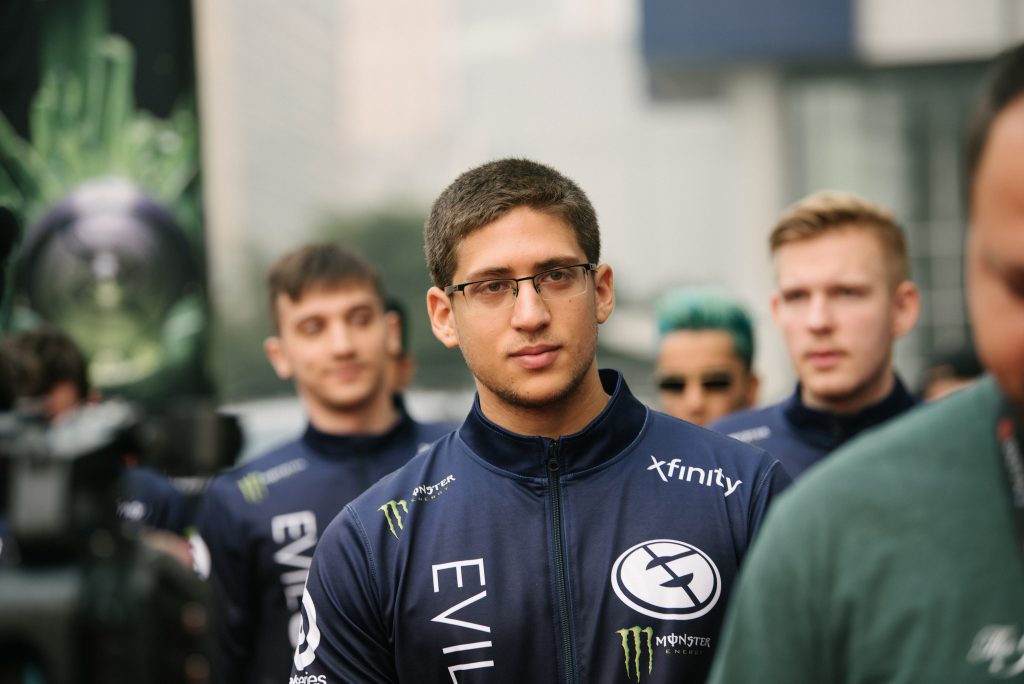
OG had been founded on the basis of friendship, namely between Fly and Johan “N0tail” Sundstein. This made the roster change hard to process for fans and the players left behind. It is broadly understood the split was not an amicable one.
With only two weeks before the Open Qualifiers for TI8 were scheduled to begin, OG was left scrambling to fill out their roster. They called on former carry player Anathan “ana” Pham and Topias “Topson” Taavitsainen, best known as a Finnish streamer and mid-player who likes to play unconventional heroes.
June
China Dota 2 SuperMajor & End of DPC Season One
The last event in the first season of the DPC was the China Dota 2 Supermajor. The tournament strove to live up to its name, supersizing its prize pool to $1,500,000 (USD) and awarding 2,250 DPC points. There was some gorgeous superhero-themed artwork created for the SuperMajor, and overall, high marks are deserved for embracing the concept.
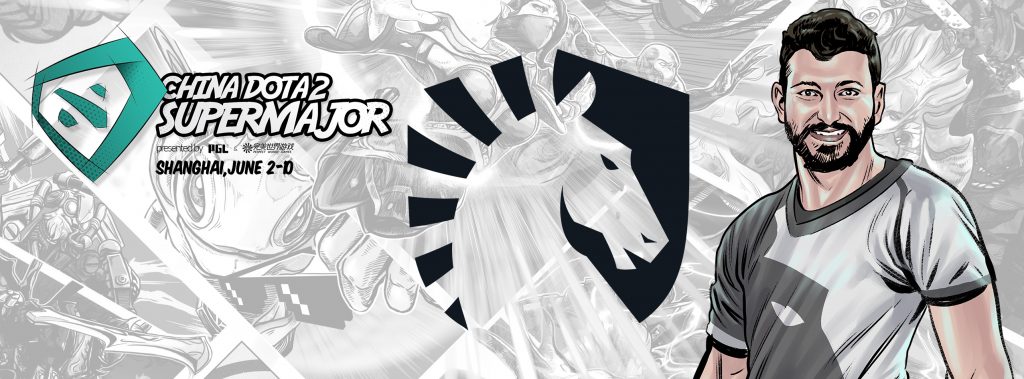
Despite a large number of DPC points available from the SuperMajor, there were no shake-ups in the team rankings following the event. Still, it was significant that Team Liquid, the winners of TI7 and the second-place team in the DPC rankings, beat Virtus.pro 3-2 in the Grand Finals. Could the European team ride this momentum through TI8 to be the first back-to-back winners?
After 22 events, Virtus.pro, Team Liquid, PSG.LGD, Team Secret, Mineski, Vici Gaming, Newbee and VGJ.Thunder all earned direct invitations to TI8. Everyone else would have their shot to win an invitation to TI8 during the Regional Qualifiers at the end of June.
New DPC Rules
Valve announced new rules for the second season of the DPC on June 4. There had been a lot of public debate about how Valve should change the DPC.
Regarding team rules, Valve removed hard roster locks, and instead created a penalty (-20% of current DPC points) for changing a player. Points were associated with the team, not the players, so there would be no transfer of points as happened when Lil and RodjER swapped teams. Valve emphasized a 40% penalty on earned DPC points for playing with a stand-in during a DPC LAN event. Finally, teams were required to be independent so that no organization or individual could have financial ties to multiple teams at TI9.
The changes most impacting fans included pairing Minors and Majors so that the winner of each Minor received an invitation to the subsequent Major. Valve also cleaned up the schedule, with only ten total DPC events, and clear timelines for when these events and their qualifiers should be held. Teams were only eligible to attend one event in each pair, other than the Minor winner. Valve also defined the size of the events and reworked the distribution of DPC points, making Majors the clear path to TI9.
Many of the changes addressed complaints that had come from the community in the previous year while remaining true to Valve’s minimalist approach to rules. The initial reception was positive: the changes were good! Changes surely meant Valve was listening and paying attention.
TI8 Qualifiers
The Open Qualifiers and Regional Qualifiers for TI8 followed closely on the heels of the SuperMajor. Europe, CIS and South America all received one spot each, which went to OG, Winstrike Team and paiN Gaming respectively. OG was the biggest surprise as their team had come together so recently and Europe was a competitive region.
China received two spots, which Team Serenity and Invictus Gaming won. Southeast Asia also had two spots, which went to Fnatic and TNC Predator.
North America was the recipient of three spots. The region was expected to be quite competitive, but having so many available spots deflated a lot of the tension. VGJ.Storm, Evil Geniuses and OpTic Gaming won their invitations and filled out the TI8 team list.
July
OpenAI
In the lead-up to TI, OpenAI came back into the news. Their Dota 2 project focuses on AI learning how to play the game. They trained a set of five bots, using self-play and scrims against human players to learn the game and optimal practices.
In July, OpenAI announced an upcoming show match versus a team of prominent members of the Dota 2 community. Early criticisms of the bots success versus humans were related to the vast number of restrictions that OpenAI required. Though the hero pool was still limited, some of the gameplay restrictions would be lifted for the show match. This made what the bots were playing closer to Dota 2, but it still wasn’t the whole game.
OpenAI also announced that there’d be matches featuring their bots versus pro teams at TI8.

Perhaps having anticipated the OpenAI announcement, Beyond the Summit (BTS) hosted Bot TI. This was a series of comical matches featuring 5 of one hero versus 5 of another hero in a brawl to determine which bot was superior. It ran from June 18 through July 15 and was a delightful spoof of the seriousness of The International. There was even a short documentary focusing on Faceless Void’s journey to the tournament.
Elder Titan took home the grand prize: bragging rights…presuming bots can brag?
August
The International 2018
The most significant tournament of the year took place from August 15-25 in Vancouver, Canada. The International 8 was a massive affair involving eighteen teams, four days of group stage games, five days of playoffs, a massive crowd-funded prize pool of $25,532,177 (USD), and the Aegis itself.
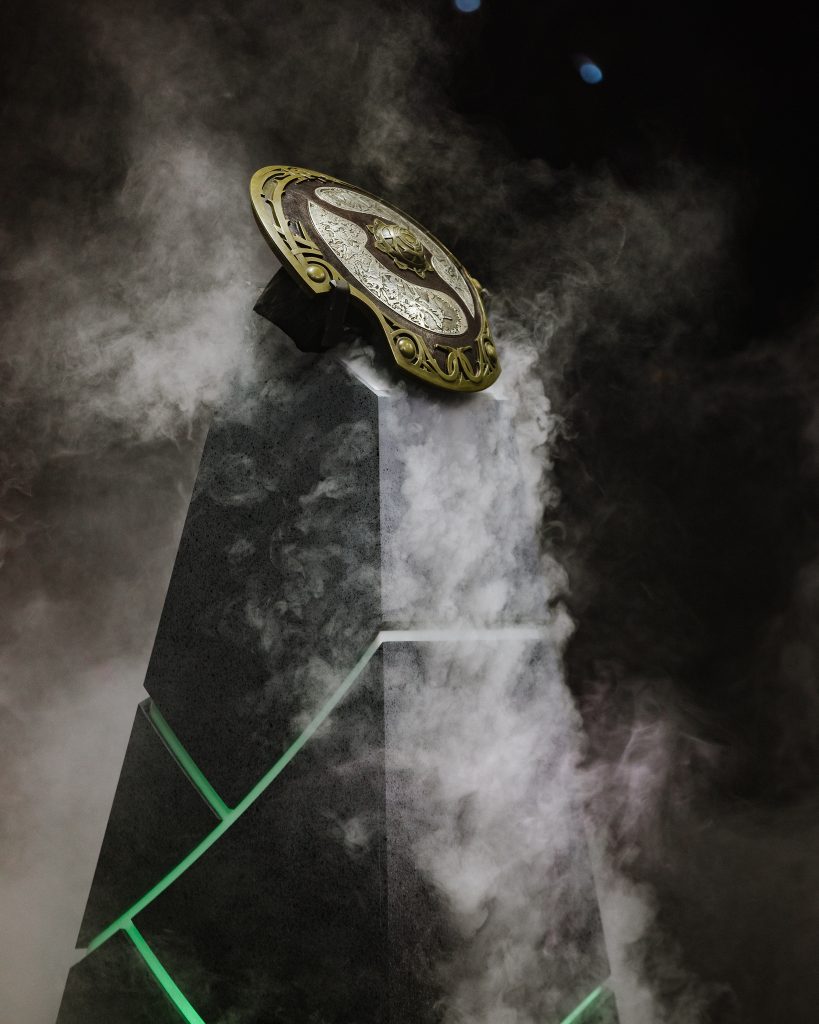
The group stage for The International 2018 began August 15. With the eighteen teams split into two groups, and each group playing a round robin using two-game series, there was a lot of Dota 2 to watch. Two teams were eliminated at this stage—paiN Gaming and Invictus Gaming. They would be the only teams not to participate in the playoffs, though paiN Gaming did play during an OpenAI show match, which they won.
Dota 2 fans descended on Vancouver for the playoffs beginning on August 20. The main stage portion of the tournament opened with an aerial performance and music. Gabe Newell, the co-founder of Valve, came out to welcome everyone and announced that attendees would receive copies of Artifact, Valve’s forthcoming card game. He would show up later in some of the pre-recorded content, recording voice lines for a Gabe Newell voice pack for the game.
The International balanced incredible Dota 2 series with a wealth of pre-recorded content pieces (some serious, some not-so-serious), interviews, crowd interaction, a cosplay contest, a short film contest and analysis from the desk. It may not have been perfect—attendees lamented the lack of outdoor space in particular—, but it was a solid showing by Valve.
But what really mattered? The competition. It came down to OG and PSG.LGD in the Grand Finals. In one of the best underdog stories of all-time, OG won in a 3-2 Grand Finals. They had come all the way through the Open Qualifiers after scrambling to replace two departing players only two weeks before those qualifiers began. There were moments when it seemed they had lost games, only for them to come back and secure the win.
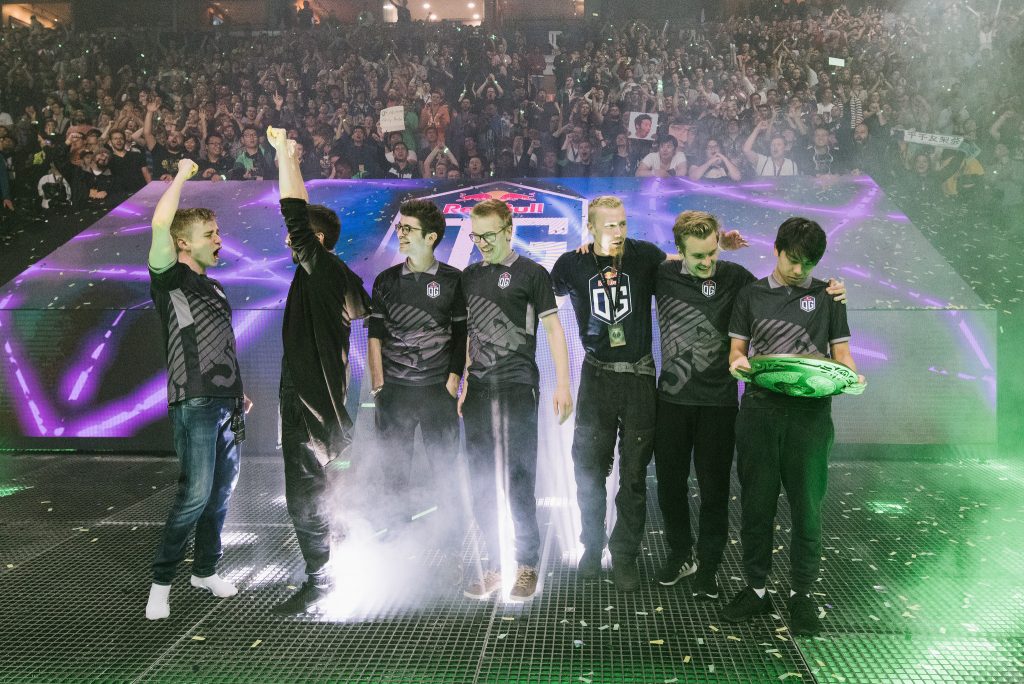
Despite how far they had to go, how many tense moments they endured, how skilled the competition was, it seemed this year was truly OG’s year to win.
September
New Rosters, New DPC Season
There was no time for teams to rest. Given how many complaints there were about the pace of season one, the lack of a break between TI8 and the new DPC season was…unusual. Still, there was Dota 2 to be played. Teams had to show up in mid-September for the Regional Qualifiers for the first Major of the second season. Rosters had to be locked by September 15 to be eligible for direct invitations to the Regional Qualifiers. There were plenty of shake-ups in the wake of TI8, including (but not limited to) changes to OG, Team Secret, VGJ.Storm, Mineski, Vici Gaming, Fnatic, TNC Predator, Newbee, Invictus Gaming, paiN Gaming and complete disbands of OpTic Gaming and VGJ.Thunder.
Despite the very short window between the end of the tournament and the start of the new season, Regional Qualifiers were very competitive. Shockingly, Team Liquid missed qualifying for the Kuala Lumpur Major, taking the Europe slot for the DreamLeague Season 10 Minor instead. They would later drop out of that event, so The Final Tribe attended in their place.
October
ESL One Hamburg & the Inter-DPC Event Period

Photo courtesy of Bart Oerbekke | ESL)
Following the qualifiers for the first two DPC events, there were available dates for non-DPC events. With so few DPC events on the schedule for 2018-19, some fans may have been concerned there’d be nothing to watch for long stretches. Not to worry, loyal fans! ESL One, a series that had been an important part of the first DPC season, ran ESL One Hamburg 2018 as a non-DPC event. With top-tier teams attending and a $300,000 (USD) prize pool, ESL One Hamburg filled the gap in the DPC schedule quite well.
The Grand Finals went a full five games, with Team Secret beating Vici Gaming. ESL One darlings Virtus.pro came in third, and paiN Gaming placed fourth.
ESL set a strong standard for non-DPC tournaments. While the reduction of DPC events from 22 to 10 was significant, ESL proved that not participating in the DPC wasn’t necessarily a handicap for tournament organizers. They produced a high quality, memorable Dota 2 competition.
Non-DPC events allow top teams to decide how packed their schedules would be, as well as creating more opportunities for lower-tier teams. Will the revamped calendar reduce some of the concerns players had about the volume of travel and the pace of the first DPC season? Time will tell, but at least now, they’ll really only have themselves to blame if they overload their schedules (right?).
November
Kuala Lumpur Major
The first Major of the season took place in Kuala Lumpur, Malaysia. With sixteen teams competing for $1,000,000 and 15,000 DPC points, the Major was a packed event.
It was also not without its own drama. Neta “33” Shapira of Ninjas in Pyjamas (NiP) was unable to obtain a visa due to political reasons. NiP was permitted to play with a stand-in—Ivan Borislavov “MinD_ContRoL” Ivanonv of Team Liquid—without any DPC point penalties. NiP ultimately placed fourth.
First place went to Virtus.pro. The CIS squad seem determined to seal their standing as the Kings of the DPC. They beat Team Secret 3-2 in the Grand Finals. Both teams are already in a strong position for earning invitations to TI9, as there are twelve invitations on the line in the DPC this season and only five events that should impact placement.
7.20
Four months after Patch 7.19 updated the game on July 29, Patch 7.20 was finally released. With massive changes to game mechanics, heroes, items, and the map itself, Patch 7.20 breathed fresh air into Dota 2. It also added Grimstroke to Captain’s Mode. According to datdota, by the end of 2018, that hero had already been picked 106 times in professional matches, beating out Pudge (70), Bristleback (57), Meepo (48), Riki (25) and Techies (20).
December
TNC and the Chongqing Major / Racism
Underlying most of November was an ongoing storyline regarding two professional players, Carlo “Kuku” Palad of TNC Predator and Andrei “Skemberlu” Ong of compLexity Gaming. Both had made racist comments regarding Chinese players, the latter in a professional match at DreamLeague Season 10 and the former in a pub game following that incident.
Skemberlu was soon removed from the compLexity Gaming roster. However, the situation regarding Kuku was made more complicated by the behavior of a team manager. The Chinese community was unsatisfied by the consequences laid out by TNC and demanded that Valve take action. The conflict culminated in Valve releasing a statement on December 5 admonishing TNC Predator for exacerbating the situation. The team was fined 20% of their DPC points, Kuku was banned from the Chongqing Major, the second Major in the season, and it seemingly put the entire episode to rest.
Frosthaven: A Frostivus Story
The last Dota 2 update of the year brought us Frosthaven: A Frostivus Story. The winter community event features a new game mode in which teams of five players defend the Frostivus tree from increasingly challenging creep waves. Players can earn spins on a reward wheel to get free sets of hero cosmetics or possibly even the extremely rare gingerbread Roshan courier. Spoilers: gingerbread Roshan is adorable, and it is tragic that we won’t all be able to get one.
Frosthaven is a charming way to wrap-up the year and will be available until January 2. It should keep Dota 2 fans busy while we wait for the next events to arrive.
Coming Soon, in 2019
2018 will come to a close with the start of two non-DPC events:
Winter Madness, from WePlay!, begins December 27 and wraps up January 5. It has a $100,000 (USD) prize pool, with fourteen teams attending.
The LOOT.BET Winter Masters will have a €50,000 prize pool and twelve participating teams. It also begins on December 27 and will run until January 5.
And If you want to hold out until the next DPC event? You’re looking for the Bucharest Minor, January 9-13. PGL will host 8 teams at their studios in Romania. On the line are $300,000 (USD) and 500 DPC points, as well as an invite for the winner to the Chongqing Major later in January.
Happy Holidays all! Let us know on social media what your favorite Dota 2 moments were in 2018!
